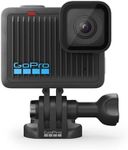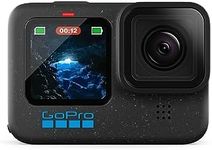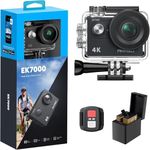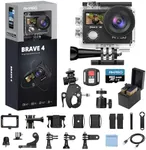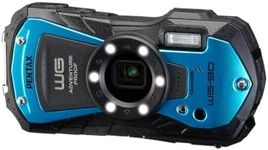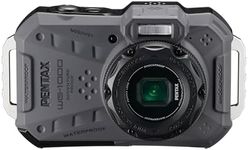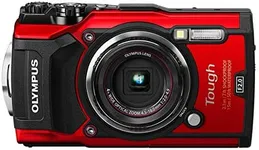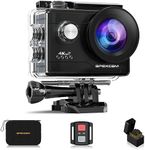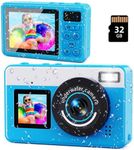Buying Guide for the Best Waterproof Cameras
Choosing a waterproof camera is all about matching the camera’s features to your intended use. Whether you want to capture underwater adventures, take photos in the rain, or simply have a camera that can survive accidental splashes, understanding the key specifications will help you make a smart choice. Focus on how and where you plan to use the camera, and let your needs guide your decision.Waterproof Depth RatingThe waterproof depth rating tells you how deep underwater the camera can go without being damaged. This is important because it determines whether the camera is suitable for activities like swimming, snorkeling, or scuba diving. Cameras are usually rated in meters or feet. For casual use around pools or in the rain, a lower depth rating (up to 3 meters/10 feet) is enough. For snorkeling, look for ratings around 10 meters/33 feet. If you plan to dive deeper, choose a camera with a higher rating, such as 15 meters/50 feet or more. Think about the deepest water you’ll encounter and pick a camera that can handle it safely.
Shockproof RatingThe shockproof rating indicates how well the camera can withstand drops or impacts. This is important if you’re planning to use the camera in rugged environments or if you’re worried about accidental drops. The rating is usually given in terms of the height from which the camera can be dropped without breaking, such as 1.5 meters/5 feet or 2 meters/6.6 feet. If you’re active or clumsy, a higher shockproof rating will give you peace of mind. If you’re mostly careful or using the camera in safe environments, a lower rating may be sufficient.
Image Quality (Megapixels and Sensor Size)Image quality is determined by the camera’s megapixel count and sensor size. Megapixels refer to the resolution of the photos, while sensor size affects how well the camera performs in different lighting conditions. Higher megapixels mean more detail, but for most casual use, anything above 12 megapixels is usually enough. Larger sensors generally produce better images, especially in low light, but they can make the camera bigger. If you want to print large photos or crop images, look for higher megapixels. If you care about low-light performance, pay attention to sensor size.
Lens and ZoomThe lens and zoom capabilities determine how close you can get to your subject and how flexible the camera is for different types of shots. Optical zoom is better than digital zoom because it maintains image quality. Waterproof cameras often have limited zoom ranges, such as 3x to 5x optical zoom. If you want to photograph distant subjects, look for a higher optical zoom. For close-up underwater shots, a wide-angle lens is helpful. Consider what you’ll be photographing most often and choose a camera with a lens that matches those needs.
Battery LifeBattery life tells you how many photos or how much video you can take before needing to recharge. This is important if you’ll be away from power sources for long periods, such as on hikes or boat trips. Battery life is usually measured in the number of shots per charge. If you plan to use the camera for extended periods, look for a model with longer battery life or the ability to swap batteries. For short outings, battery life may be less critical.
Ease of Use and ControlsEase of use refers to how simple the camera is to operate, especially when wet or underwater. Large buttons, clear menus, and intuitive controls make it easier to use the camera in challenging conditions. If you’re new to photography or want to use the camera with gloves or underwater, look for models with straightforward controls. If you’re more experienced, you might appreciate advanced settings, but make sure they’re still accessible when you need them.
Additional Features (GPS, Wi-Fi, Video Recording)Some waterproof cameras offer extra features like GPS for location tagging, Wi-Fi for easy sharing, or high-quality video recording. These features can add convenience and fun, but may not be necessary for everyone. If you want to share photos quickly, Wi-Fi is useful. If you like to record your adventures, check the video resolution and frame rates. Think about which extras will actually enhance your experience and focus on those.
